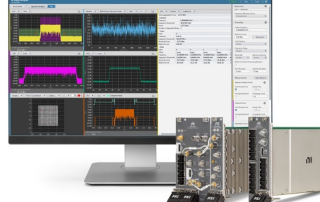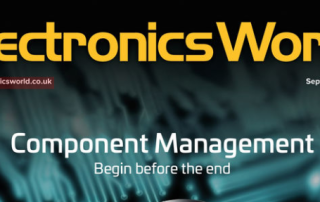April 1, 2024
Recently, researchers at IMRA – a creative research and innovation organization that develops essential technologies for industrial use – overcame many of the issues associated with the THz regime when working at frequencies above 300 GHz. In a recent article from eeDesignIt, they detail how our millimeter wave isolators helped advance the research in the pursuit of a molecular clock. Read the article here:
March 15, 2024
The scientific community is striving to bring life to the so-called “dead zone”, a region of the electromagnetic (EM) spectrum between electronics and optics. This band, often referred to as the “terahertz gap”, resides between 100 GHz and 30 THz. EverythingRF recently published an article mentioning how our isolators are helping bridge the gap. Read the article here:
February 28, 2024
For a 3rd consecutive year, Micro Harmonics has secured its place on the annual Inc. 5000 Regionals List of fastest-growing private companies in the United States. The prestigious list compiled by Inc. Magazine has Micro Harmonics ranked at number 106 in the Mid-Atlantic region. “We take great pride in our consistent growth and are honored to be acknowledged alongside an esteemed roster of thriving companies,” [...]
February 1, 2024
“We were really struggling with bad mismatches in our waveguide system and kept getting these really bad frequency ripples,” explains Ed Loewenstein, Chief Architect at NI – formerly known as National Instruments. Learn how NI was able to overcome these standing waves within the D band in a new article published in Industry Today.
January 15, 2024
Our founder – and one of the world’s leading experts in Faraday Rotation Isolators, David Porterfield – recently wrote a paper on the science behind why traditional isolators designed for room temperature operation do not work well at cryogenic temperatures. The paper also demonstrates how our newly designed isolators operate with high isolation and low insertion loss at MMW frequencies even at temperatures as low [...]
November 30, 2023
Engineers working within the D band are increasingly looking for better ways to solve the issue of reflected waves. "When you get above 110 GHz, it’s sort of uncharted territory,” explains Ed Loewenstein, Chief Architect at NI. “Your connectivity gets strange, and cables no longer work well. So, most things are done in waveguides.” Signal reflections, also known as mismatches, are undesirable waves, or ripples, [...]
November 14, 2023
Faraday rotation isolators designed for room temperature operation do not work well at cryogenic temperatures. The primary cause is temperature-dependent ferrite magnetization. Everything RF recently published a technical paper written by Micro Harmonics Founder, David Porterfield that addresses how to achieve optimal performance in a Faraday rotation isolator at cryogenic temperatures. Read the full article here:
October 30, 2023
The call for ‘more D band’ has gone out. With the ability to transmit 100 Gigabits per second (Gbps), the D band will unlock a number of technologies across a wide range of industries. Electronic Specifier recently published an article featuring Micro Harmonics and how our millimeter wave components are helping to unlock commercial applications that include high-precision sensing, radio astronomy, and airport security detectors. [...]
October 6, 2023
Everything RF recently published an article that discussed the issue of reflected waves at D band. The story looks at NI which had been trying to deliver reliable test, measurement and prototyping equipment for D band, but was struggling with mismatched waves. The solution was to use our millimeter wave isolators. Read the full story here:
September 28, 2023
Micro Harmonics CEO, David Porterfield, was quoted in an article that recently published in Electronics World where the publication attempts to answer a key question: ‘can the infrastructure for D band be built out within the next 5-10 years allowing the impending move up the EM spectrum. Read the full article here:










